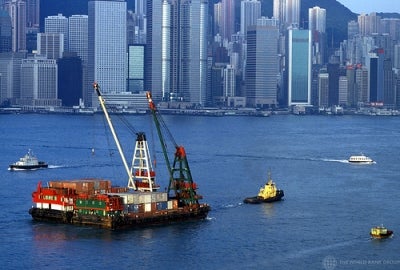
Ten years ago, the first Better Air Quality (BAQ) conference brought policy makers, experts, and advocates to Hong Kong to review the status of air quality in Asia and to recommend how to improve it. Today we are here once again to kick off the seventh BAQ in ten years, organized by the Clean Air Asia (formerly Clean Air Initiative for Asian Cities), Hong Kong Environmental Protection Department, and Hong Kong Polytechnic University. The theme of BAQ 2012 is “Growing Cities, Healthy Cities,”
Since the first meeting, we can say with certainty that the average air quality in Asian cities have improved despite their economic growth. The yearly average PM10 (particulate matter less than 10 microns) concentration for cities in the about 20 Asian countries engaged in the Clean Air Initiative for Asia was above 80 µg/m3 (microgram per m3) in year 2000. Now it is around 50 µg/m3. Although there are huge differences in air quality between countries and cities within the Asia region, the overall trend over the last decade is that most of the countries and cities have shown progress.
Most Asian countries have established, tightened and expanded ambient air quality standards (AAQS). A decade ago, only few Asian countries had standards, now there is regular air quality monitoring and air control programs.
Despite the improvement in air quality and its management in Asia, there is a need to come together and do some collective thinking. Over 50% of Asians now live in cities, which are estimated to grow by another billion over the next 30 years while the number of megacities will increase from 12 to more than 20. The air quality of 7 out of 10 cities in developing Asian countries is unhealthy, and the number of people struck by cancer, heart attacks, asthma and other diseases caused or made worse by air pollution continues to rise. The challenge is to deal with accelerated urbanization and economic growth, while reducing air pollution.
Several Asian countries and hundreds of cities are still lagging behind in the development of better air quality. There are still countries in the region where the average PM10 concentrations are far from the most relaxed WHO standard of 70 µg/m3 yearly average for developing countries. This is likely to have impacts on human health in the region.
The difference in air quality between most Asian cities and cities in North America and Europe are still huge and will require strong and continued political will and technical creativity and dedication to substantively narrow down. Despite China’s solid progress in PM concentration reductions over the last decade, they still are at a PM concentrations level that USA was in the 1960s.
Fortunately, the political and technical solutions to meet such air quality and related human health challenges are often known. Some countries and several cities have gone through the process, providing us important lessons on how to move towards the WHO stipulated air quality standards.
There are examples on how some cities are developing and implementing solutions for air quality improvements here in Asia. In Ulaanbaatar, Mongolia, which we realized was probably the city in the world with highest PM concentrations ever measured - a full scale Air Quality Management study was first carried out. When the cost of inaction was known, including how many people who would most likely die from not taking action, the project took shape. Now we are engaged in replacing all the inefficient stoves in about 150,000 sub-urban Ger households that largely contribute to the high PM concentrations. We expect the citizens in Ulaanbaatar to live in a substantively better environment over the next years.
In Hanoi, Vietnam, the World Bank is doing a similar Air Quality Management study focusing on the transportation sector. Like in Ulaanbaatar, the inventory will help identify which sources should be targeted for control effect. The project also supports training on emission inventory and modeling. Health impact assessment will identify people vulnerable to air pollution, assess the exposure of commuters, and propose measures to reduce exposure.
One important step towards reducing air pollution is getting the right data and indicators into the hands of the public and policy makers. A Clean Air Asia study undertaken with support of the World Bank and released at this conference – Accessing Asia, and the related CitiesACT data portal, provide stakeholders in Asia with ‘open’ access to reliable data necessary for assessing air pollution and GHG emissions from the transport and energy sectors for 23 cities in Asia. Given its focus of air pollution - which has mostly local impacts, and GHG emissions - whose impacts are global, this study helps to bridge the gap between two important inter-related topics.
We know that there is no silver bullet to quickly bring down overall air pollution levels. We need to carefully lay down various pieces of the jigsaw to complete a challenging air quality management puzzle with the aim of ensuring that as Asian cities grow, their cities become healthier.


Join the Conversation